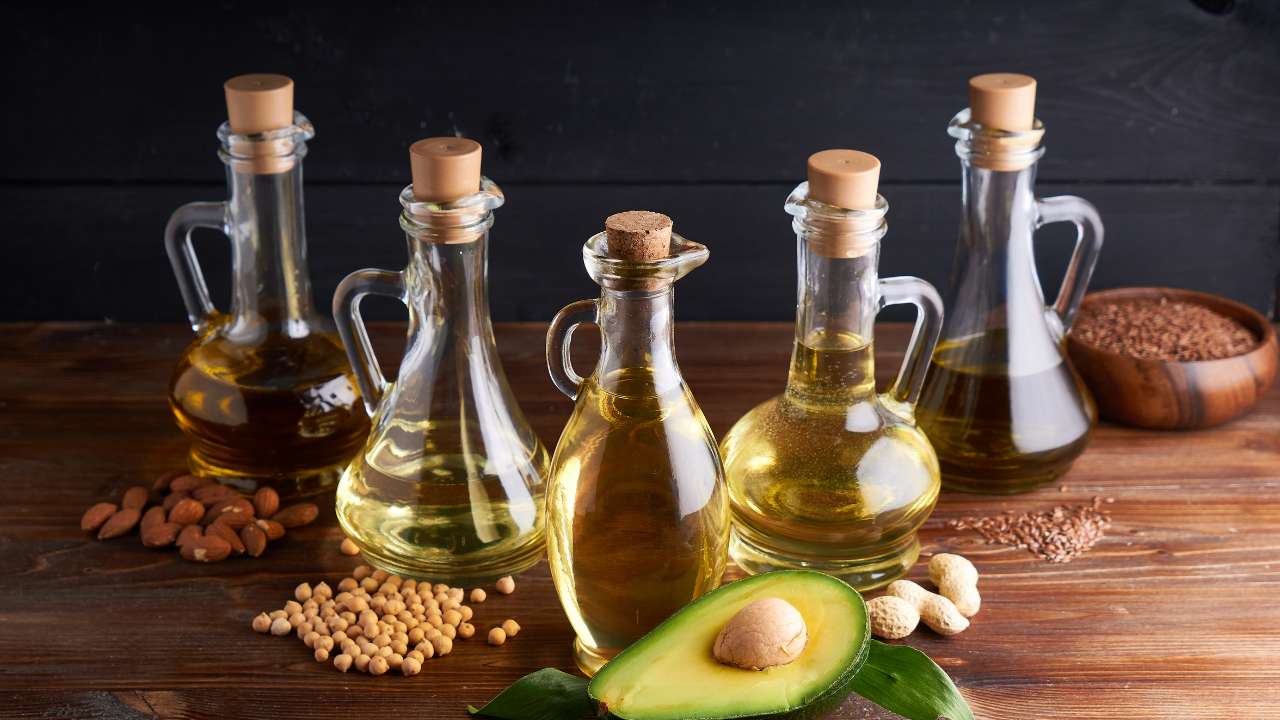Cooking oils are a vital part of our daily meals. They not only help in preparing food but also contribute to flavor, texture, and nutritional value. With so many different types available, it can be confusing to choose the right one. In this article, we’ll explore the most common types of cooking oils, their uses, and benefits.
1. Olive Oil
Olive oil is one of the most popular and healthiest cooking oils. It’s known for its rich flavor and high content of monounsaturated fats, which are beneficial for heart health. Olive oil is great for sautéing, dressing salads, or drizzling over cooked dishes.
Benefits:
Also Read
- Rich in antioxidants
- Supports heart health
- Helps with reducing inflammation
Best for: Salad dressings, light sautéing, and Mediterranean dishes.
2. Canola Oil
Canola oil is another commonly used oil in kitchens. It has a neutral flavor and is often used for frying, baking, and stir-frying. It’s low in saturated fat and high in omega-3 fatty acids.
Benefits:
- Supports heart health
- Low in saturated fat
- Contains omega-3 fatty acids
Best for: Frying, baking, and stir-frying.
3. Coconut Oil
Coconut oil has gained a lot of popularity in recent years, especially for its supposed health benefits. It’s solid at room temperature and is often used in baking or frying. Coconut oil contains medium-chain triglycerides (MCTs), which are believed to aid in weight loss and metabolism.
Benefits:
- Supports metabolism
- Contains MCTs
- Adds a tropical flavor to dishes
Best for: Baking, frying, and in tropical or dessert dishes.
4. Sunflower Oil
Sunflower oil is another widely used cooking oil. It has a high smoke point, which makes it perfect for high-heat cooking methods like frying. It’s also light in flavor, which makes it versatile for various dishes.
Benefits:
- High smoke point
- Neutral flavor
- Rich in vitamin E
Best for: Frying, sautéing, and baking.
5. Peanut Oil
Peanut oil is often used in Asian and deep-frying dishes. It’s rich in monounsaturated fats and has a mild nutty flavor. It’s ideal for high-heat cooking due to its high smoke point.
Benefits:
- High in monounsaturated fats
- Mild nutty flavor
- High smoke point
Best for: Deep frying, stir frying, and Asian recipes.
6. Avocado Oil
Avocado oil is a versatile oil with a mild flavor that’s rich in healthy fats. It’s known for its high smoke point, making it a great choice for grilling, frying, and roasting.
Benefits:
- High in monounsaturated fats
- Great for high-heat cooking
- Rich in antioxidants
Best for: Frying, roasting, and grilling.
7. Sesame Oil
Sesame oil is a popular ingredient in Asian cooking. It comes in two varieties: toasted and untoasted. Toasted sesame oil has a rich, nutty flavor and is often used in dressings or as a finishing oil. Untoasted sesame oil is more neutral and is good for cooking.
Benefits:
- Rich in antioxidants
- High in healthy fats
- Good for flavoring dishes
Best for: Stir-frying, dressings, and as a finishing oil.
8. Grapeseed Oil
Grapeseed oil is made from the seeds of grapes. It’s light and has a neutral flavor, making it a versatile cooking oil. It’s high in polyunsaturated fats and vitamin E.
Benefits:
- High in polyunsaturated fats
- Rich in vitamin E
- Neutral flavor
Best for: Sautéing, baking, and frying.
9. Butter and Ghee
Although not technically an oil, butter and ghee are often used in cooking for flavor and texture. Ghee is clarified butter, meaning it’s free from milk solids, making it more suitable for higher temperatures.
Benefits:
- Rich flavor
- Good for high-heat cooking (ghee)
- Contains butyrate, a short-chain fatty acid
Best for: Frying, baking, and adding flavor to dishes.
10. Flaxseed Oil
Flaxseed oil is rich in omega-3 fatty acids, which are great for heart health. It has a strong flavor and is best used in cold dishes like salads or drizzled over vegetables.
Benefits:
- Rich in omega-3 fatty acids
- Supports heart health
- Best used in cold dishes
Best for: Cold dishes, dressings, and smoothies.
Trusted Sources Link – https://nutritionsource.hsph.harvard.edu/
Conclusion
Each type of cooking oil has its unique properties, and choosing the right one depends on the type of dish you are preparing. From heart-healthy olive oil to the rich flavor of coconut oil, there’s a cooking oil for every occasion. By selecting the appropriate oil, we can enhance the taste and nutritional value of our meals.
Frequently Asked Questions (FAQs)
1. What cooking oil is the healthiest?
Olive oil is often considered the healthiest cooking oil due to its high content of heart-healthy monounsaturated fats.
2. Can I use coconut oil for frying?
Yes, coconut oil can be used for frying, but it’s best for medium to low-temperature cooking.
3. What is the best oil for high-heat cooking?
Avocado oil, peanut oil, and sunflower oil are great choices for high-heat cooking due to their high smoke points.
4. Is olive oil good for baking?
Yes, olive oil can be used in baking, especially for savory dishes.
5. Can I mix different cooking oils?
Yes, you can mix cooking oils, but it’s essential to be mindful of their individual properties, such as flavor and smoke point.
Stay Connected With Google News
Article Sources and References :-
Merrick Healthy Weight Dog Food: Halal Food and Its Health Benefits Best Hospitals for Pancreatic Cancer Treatment in the USA





